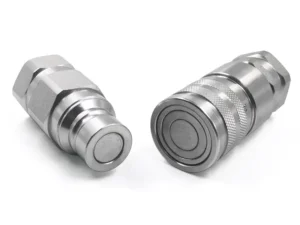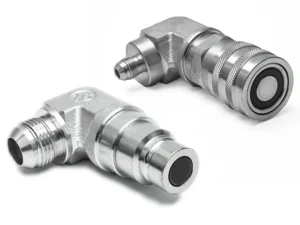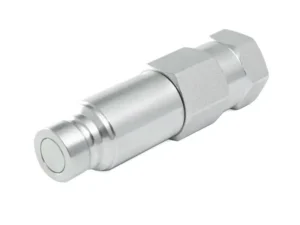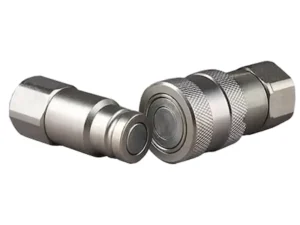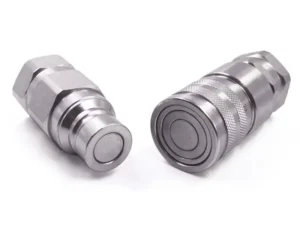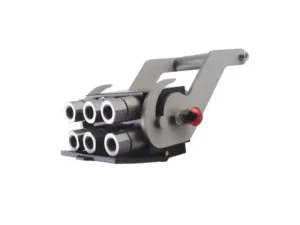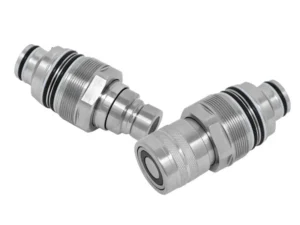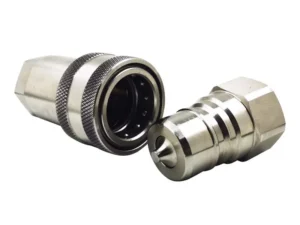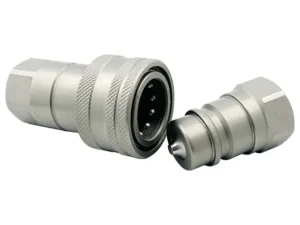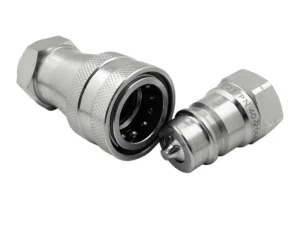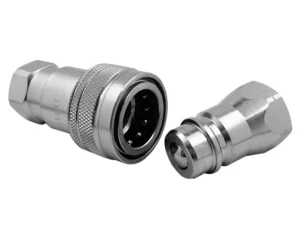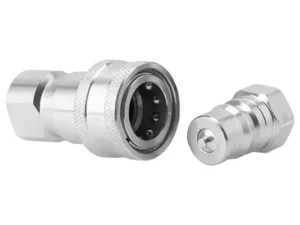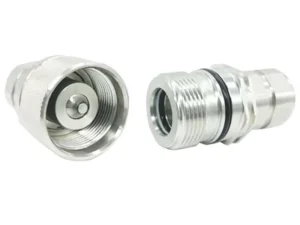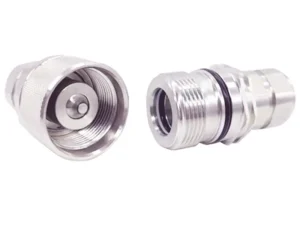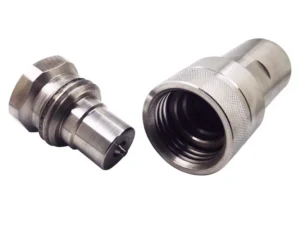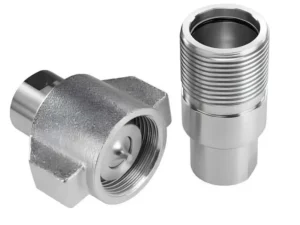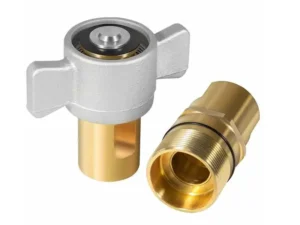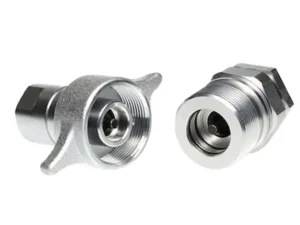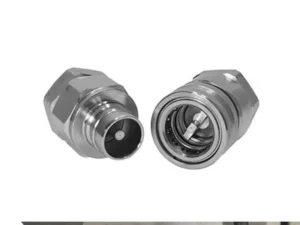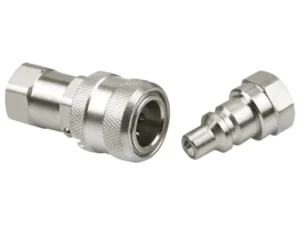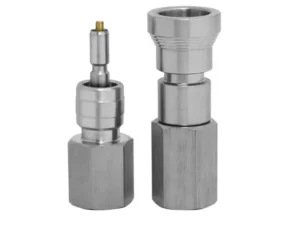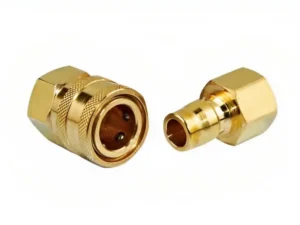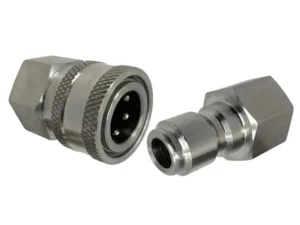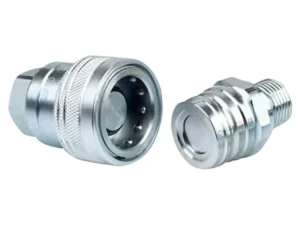Thread For Hydraulic Systems
What is the thread according to DIN 3852-2
Here’s a breakdown of the thread specified in DIN 3852-2:
Key Points:
- Thread Type: It primarily designates parallel threads, but also includes a tapered thread variant.
- Standard Scope: Covers dimensions, types, and designations for stud ends used in fittings, valves, and port plugs.
- Relationship to ISO Standards: Closely aligns with ISO 1179-1 for parallel threads, but offers additional types not included in that standard.
Thread Types:
DIN 3852-2 defines several thread types, each with distinct sealing methods:
-
Type B:
- Parallel thread (similar to ISO 228-1 BSPP)
- Metal-to-metal sealing via a cutting face at the base of the male thread
-
Type E:
- Parallel thread
- Sealing achieved using a bonded washer or an O-ring
-
Type G:
- Parallel thread
- Sealing achieved using an O-ring and a retaining ring
-
Type S:
- Tapered thread (similar to BSP Taper)
- Sealing achieved using a bonded washer
Additional Information:
- While DIN 3852-2 is primarily a German standard, it’s widely used in Europe and other regions.
- It’s often considered interchangeable with ISO 1179-1 for parallel threads, but the additional types offered in DIN 3852-2 provide more options for specific applications.
- Always consult the relevant standards and manufacturer’s specifications to ensure compatibility when working with hydraulic components.
Here’s a summary of the thread specified in ISO 1179-1:
Key Points:
- Thread Type: Specifies parallel threads, specifically British Standard Pipe Parallel (BSPP) threads, based on ISO 228-1.
- Scope: Covers dimensions for threaded ports (female threads) used in hydraulic fittings, valves, and other components.
- Sealing: Designed for use with elastomeric seals (O-rings, bonded washers) or metal-to-metal sealing.
- Applications: Widely used in hydraulic systems, particularly in Europe and Asia.
Thread Dimensions:
Key Dimensions:
- D1: Major thread diameter
- D2: Minor thread diameter
- D3: Outer diameter of sealing face
- D4: Inner diameter of sealing face
- L1: Maximum thread length
- L2: Minimum thread length
- L3: Depth of threaded hole
Additional Information:
- ISO 1179-1 is part of a broader standard (ISO 1179) covering various aspects of hydraulic connections.
- It’s often used in conjunction with other ISO standards for stud ends (male threads), such as ISO 1179-2, ISO 1179-3, and ISO 1179-4.
- These standards ensure compatibility between different hydraulic components from various manufacturers.
Compatibility with DIN 3852-2:
- While ISO 1179-1 and DIN 3852-2 both specify parallel threads, they have slight differences in thread dimensions and sealing methods.
- It’s essential to consult both standards and manufacturer’s specifications when working with components that might use either standard.
Here’s a breakdown of the thread specified in ISO 228-1, incorporating images for clarity:
Key Points:
- Thread Type: Specifies parallel threads, commonly known as British Standard Pipe Parallel (BSPP) threads.
- Thread Form: Whitworth thread form, characterized by rounded crests and roots.
- Sealing: Relies on elastomeric seals (O-rings, bonded washers) or metal-to-metal sealing, rather than thread interference.
- Applications: Widely used in various industries for pipes, fittings, valves, and other fluid-handling components.
Thread Dimensions:
- Major Diameter (D): The largest diameter of the thread.
- Minor Diameter (d): The smallest diameter of the thread.
- Pitch (P): The distance between adjacent threads, measured along the axis.
- Thread Angle (α): The angle between the flanks of the thread, typically 55 degrees for BSPP threads.
Designation:
- Threads are designated using the letter “G” followed by the nominal size in inches (e.g., G 1/2, G 3/4).
Key Features:
- Parallel Threads: The threads run parallel to each other, unlike tapered threads.
- Whitworth Thread Form: Provides a strong and durable thread profile.
- No Thread Interference: Sealing is achieved through seals or metal-to-metal contact, not thread interference.
- Widely Used: Applicable in various industries, particularly in Europe and Asia.
Additional Information:
- ISO 228-1 is part of a broader ISO 228 standard covering various pipe threads.
- It’s often used in conjunction with other standards, such as ISO 1179-1 for hydraulic fittings.
- Ensure compatibility by consulting relevant standards and manufacturer’s specifications when working with threaded components.
